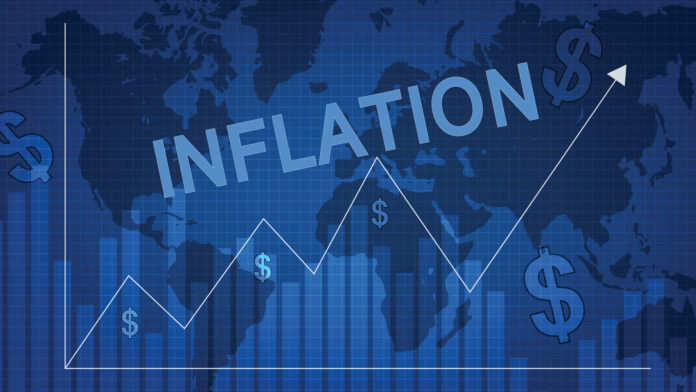The Federal Reserve, as expected, raised interest rates by a half a percentage point following its quarter percentage point hike in March. This is the Fed’s largest interest rate hike since 2000.
Federal Reserve Rapidly Withdrawing Support from Economy to Curb Inflation
With inflation jumping at its fastest pace in four decades, the Federal Reserve announced at its May 4 meeting that it has raised interest rates by half a percentage point. This half percentage point hike follows it’s March hike of a quarter percentage point.
An important question for you. Spring 2022 is here…have you completed your 2022 Real Estate Business and Lead Generation Plan? If not, no worries. We have done the hard work for you. Download your 2022 REAL ESTATE TREASURE MAP! Text HARRIS to 47372. It’s that simple and takes 3 seconds. Text HARRIS to 47372 and when you do we will instantly text you back with a link to download. BONUS: For a limited time when you text HARRIS to 47372 you will also receive a Coaching Call!
4 Msgs/Month. Reply STOP to cancel, HELP for help. Msg&data rates may apply. Terms & Privacy: slkt.io/JWQt
The Fed also announced at this May 4 meeting a plan to shrink its nearly $9T balance sheet in massive bond holdings.
Taken together, these two policy U-turns are clear indications that the Fed is serious about cooling the economy and job market as inflation persists at the fastest rate climb in 40 years.
Fed Chair Jerome H. Powell said, Inflation is much too high” and that the Fed is “moving expeditiously to bring it back down.” Powell also noted, “There is a broad sense on the (Federal Open Market Committee) that additional 50-basis point increases should be on the table at the next couple of meetings.”
Consumer prices in March increased 6.6% y/y, according to the Fed’s preferred inflation yardstick, the Personal Consumption Expenditures or PCE price index.Excluding food and energy costs, prices were up 5.2%. This is the sharpest increase since 1982
Removing Fiscal Policy Support A Balancing Act
On the one hand, the Fed hasn’t the luxury of waiting for inflation to moderate on its own and on the other, the Fed is hoping to remove fiscal support at a pace and scale that doesn’t tip the economy into a full-fledged recession.
Powell acknowledged this balancing act by saying, “I do expect this will be very challenging, it’s not going to be easy…(but)…I think we have a good chance to have a soft or soft-ish landing.”
Powell was quick to say that bigger rate increases – 0.75% – were “not something the committee is actively considering.”
Plan to Shrink Balance Sheet
The Fed intends to shrink its balance sheet starting in June. This means that the Fed will allow securities to mature without reinvestment. The Fed will ultimately let up to $60B in Treasury debt expire each month along with $35B in mortgage-backed debt. The plan will be fully “phased in” as of September 2022.
This shrinkage is expected to cool financial markets and could help cool demand in the housing market as it lifts longer-term borrowing costs. Already, in anticipation of the Fed’s hike in interest rates and its balance sheet reduction, mortgage rates have pushed higher at a record-breaking speed and the volume of home sales has fallen.
Impact of Fed’s U-Turn Policies on Prospective Home Buyers
Mortgage rates, like inflation rates, have climbed at the fastest pace in nearly four decades since the beginning of 2022. With mortgage rates up nearly two percentage points coupled with stratospheric home prices, it’s now even more expensive for prospective homebuyers to actually afford to buy a house.
According to Joel Kan, associate vice president of economic and industry forecasting with the Mortgage Bankers Association MBA), “Prospective homebuyers have pulled back this spring as they continue to face limited options of homes for sale along with higher costs from increasing mortgage rates and prices.”
With a 10% down payment on a median-priced single-family home, the typical monthly mortgage payment is now $1,834, an increase of +49% from last year’s monthly mortgage price tag of $1,235 when accounting for both higher home prices and higher rates, according to the MBA. (This $1834 does not include the non-negotiables such as property taxes, homeowner’s insurance and mortgage insurance often required on down payments of less than 20%.)
A recent study from LendingTree indicated that the increase in rates from the beginning of 2022 could cost home buyers an extra $93,000 over the life of a 30-year mortgage.
URGENT: Are You Worried About Having A Slower Start To The Year? Don’t Hit The Panic Button, Learn How To Have Massive Success In A Shifting Market. When You Attend This Exclusive Training You Will Learn 17 Surprising Secrets Of The Top 100 $ Millionaire Agents. Claim Your FREE Spot Now. After You Have Attended This Event You Will Experience A Huge Feeling Of Relief Knowing You Will FINALLY Laugh At Your Money Worries – You Will Have Your Own Personalized 2022 Step-By-Step Business And Lead Generation Plan. Learn Now How To Generate 100’s of Motivated Leads for FREE, Without Coming Off As A Pushy Salesperson and Losing Your Soul. You Will Soon Know How To Become One of the 1000s of Agents Making HUGE Money In This Changing Market. Claim your FREE spot now. YES, I Want To Attend The FREE Webinar! <——Click To Register
P.S. Free Webinar, Limited Space. Less Than 300 Spots Still Available.
Thanks to the New York Times, Bloomberg, LendingTree, Mortgage Bankers Association and National Public Radio,
























